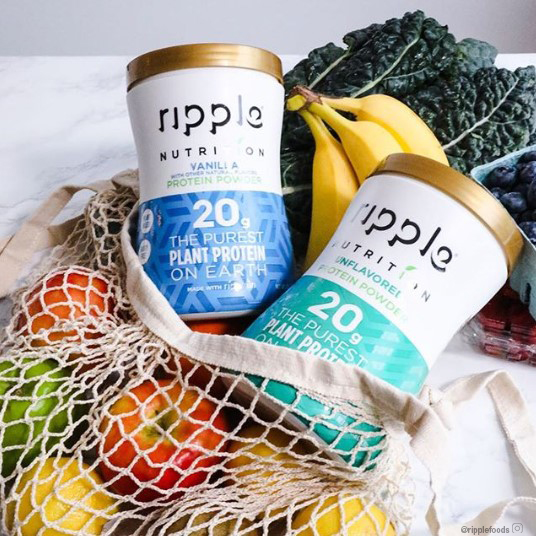An Inside Look at How ‘Better for You’ Products are Influencing Consumers and Affecting Our Planet
August 10, 2021
As consumers, we are always seeing trends in the packaging industry change. There is a trend on the rise called ‘Better for You.’ Some key words that may stick out to you from the ‘Better for You’ trend are: healthy, relaxation, plant-based, low-carb, high-protein, and more! While many of these key words are recognizable on food and beverage products, they also make an appearance in nutraceutical, health and beauty, household, pet, and other consumer products. The ‘Better for You’ trend was even buzzing at the Sweets and Snacks show this year. In our last blog, we covered sustainability, and ‘Better for You’ products aren’t immune to the rise in sustainable packaging. Let’s dig a little deeper…
What are consumers looking for?
Millennials and Gen Z are known for standing up for what they believe in. One of their largest movements right now is leading a clean lifestyle. The main goal is to substitute products with high preservatives and chemical-sounding ingredients with products that not only are healthy for your body but also the planet. This led companies and brands to supply healthier, cleaner products. For example, many health and beauty brands have come out with products that only include organic ingredients. Another example you might have seen is food and beverage brands coming out with keto friendly or plant-based SKUs to satisfy consumer demand to eat clean.
At the Sweets and Snacks show, we noticed many ‘Better for You’ trends, especially from the candy industry. Candy and sweets’ brands are finding new ways to make their products healthy, relaxing, organic, and even sugar free. Weird, right? Another popular combination from the Sweets and Snacks Show was candy and CBD. Throughout the stressful year of 2020, consumers were reporting higher anxiety, which led them to look for a product that highlights relaxation, like CBD.
Relaxation wasn’t the only focus during the pandemic. The rapid spread of the virus encouraged consumers to become more aware of their health. Consumers were quickly reaching for products with immune boosting ingredients. As consumers become more interested in the role food plays in their health, they are also finding new shopping habits. Something that a lot of people used to ignore is now essential in their decision-making process – ingredient labels. Snack Foods & Wholesale Bakery laid out an interesting statistic about ingredient labels, “Nearly two-thirds (63 percent) of adults say the ingredients in a food or beverage have at least a moderate influence on what they buy.” Shoppers have made it a habit to pick up the product and read it before placing it in their shopping cart. On the label, consumers are looking for recognizable ingredients and the words natural or organic. Companies are coming up with convenient ways for the customer to get information about new products while they are shopping in the store by providing ingredient information with a QR code. This will give consumers the ability to scan a product while shopping and get a full run down on the product’s ingredients and information. This is an effortless way to verify claims and product information, making the shopping experience easier.
Better for the Planet
‘Better For You’ brands are focusing on not only their consumers’ health, but also the health of the planet. A large part of sustainability goals are to make it more convenient for consumers to recycle the product’s packaging. There are new label and packaging technologies that allow for an eco-friendly disposal. Some examples are perforations, E-Beam coating, crystallizable shrink, down gauging, and PureWash™ technologies that make it easier for consumer to recycle products after use. These technologies are gaining traction in the label and packaging industry as customers are becoming more aware of recycling capabilities.
Flexible packaging also has a positive impact on the environment. How? As you may have noticed while cruising through your local grocery store, many products like sour cream, mayo, and apple sauce have transitioned to a squeeze pouch, also known as flexible packaging. These transitions have an influence on the planet in many ways. The first benefit is transportation. Compared to rigid packaging, like a tub of sour cream, flexible packaging can be shipped with more product per truck due to its flat and light-weight characteristics. Less trucks means less emissions. Flexible packaging is also becoming very prevalent in the fresh produce section of the grocery store. Suppliers are choosing to package their produce with clear flexible packaging because it protects the product during transportation and on the shelf, reducing spoilage and extending shelf life. This also came in handy during the pandemic because the flexible package protected the product from being touched or handled before getting consumers homes, reducing the spread of the virus. An added benefit to packaging produce is additional marketing and advertising for the product.
Branding ‘Better for You’
With the new ‘better for you’ trends, came new branding strategies. According to The Strategy Distillery, there are three key rules for branding these ‘Better for You’ products: convenience, balance, and authenticity. Switching to a clean lifestyle is an investment, so making it easy for the customer to know the product is clean and easy to incorporate into their daily lives is key. It is also important to keep an even balance between healthy and enjoyable. Similarly, shoppers are looking for a connection, a voice they can trust. Consumers are more likely to have brand loyalty with products that they know are good for them and the planet.
Incorporating the ‘Better for You’ trend onto packaging doesn’t mean you need a complete overhaul of your packaging or label design. Small artwork changes can effectively communicate to your customers. Currently in food and beverage, we are seeing many label artwork additions that read ‘healthy fats’ or ‘low in sugar.’ And within the health and beauty industry, we are noticing more products read ‘organic’ or ‘all natural.’ These slight changes are a result of the ‘Better for You’ trend. Many brands do not want to change their whole product design, but instead add words or graphics to really pinpoint the ‘Better for You’ characteristics the product has to offer. Here at Inland, we have Customer Graphics Coordinators, or CGCs. They are our superstars behind the scenes. They know the ins and outs of each press and their capabilities, making the artwork change process smooth.
Now that you are more familiar with the ‘Better for You’ trend, we hope you now have a better understanding of how it affects consumers, the planet, and the packaging industry. Next time you visit your local grocery store, look around and see if you can point out new ‘Better for You’ artwork changes or flexible packaging on products that normally are in rigid containers.



